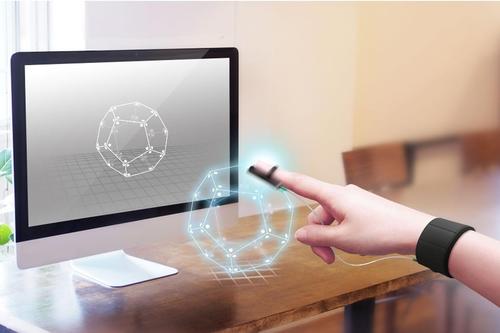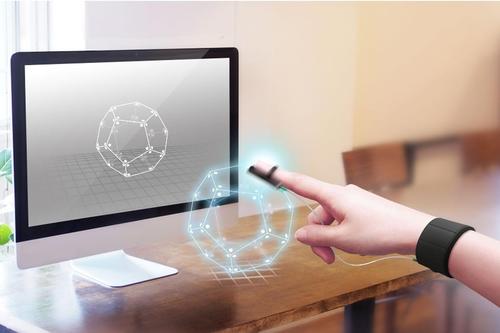'Feeling' Virtual Objects in Virtual Space With 3D-Haptics Technology
October 1, 2014

Is this a next-level CAD HMI (human-machine interface)? Miraisens Inc., a Tokyo-based company, recently unveiled what they are calling "3D-Haptics Technology." This new technology allows users to "feel" virtual 3D objects, and move them around in virtual space. In a recent demonstration of the technology, users moved virtual 3D objects via a sensor and fingertip molding that issues vibrations. The technology is a first and has a lot of promising applications in the gaming world, the medical industry, and 3D printing.
Miraisens is a spin-off company from the National Institute of Advanced Industrial Science and Technology in Tsukuba, Tokyo. Their new technology opens up avenues for innovation in a wealth of different fields. It is definitely exciting as it expands technology's ability to engage our human senses. While we haven't yet been able to touch something within the digital world, 3D-Haptics Technology now makes this possible, albeit virtually.

The current technology works using a virtual reality headset, a bracelet with hardware attached (enclosed in a box), and a fingertip molding that is wired to the hardware on the wrist. The technology can also be wired into a coin-shaped mold, a stick, or a pen. The handheld molding emits vibrations on the fingertips that allow users to "feel" 3D objects in virtual space, which they see on their virtual headsets.
These vibrations trick the mind into recreating sensory feelings of touching, pushing, pulling, and experiencing resistance from 3D virtual objects. For instance, the device can allow a user to feel the resistance of pushing a 3D button in virtual reality. It can also allow users to push, pull, and move 3D virtual objects around, emitting vibrations that recreate a sense of object resistance, even though it's only occurring in virtual space.
The technology literally makes virtual reality "feel" more real. The applications within the gaming world are self-evident. Here, companies will likely rush at the idea of implementing more realistic haptic controls, which further immerse users in virtual environments.
Miraisens is also considering using the technology to allow users to create 3D prints via touch. This would eliminate the need for a professional design, and allow novices to create 3D prints at the touch of a virtual button.
More interestingly, there are talks of implementing the technology within the medical industry as a new tool for performing remote surgeries. Some think that the technology could be used to help visually impaired people navigate more easily through haptic sensory information. This is all promising, and it looks like we'll be seeing companies implement better haptic controls in the future.
You can access the company's schedule for the beta distribution here.
Related posts:
About the Author(s)
You May Also Like





